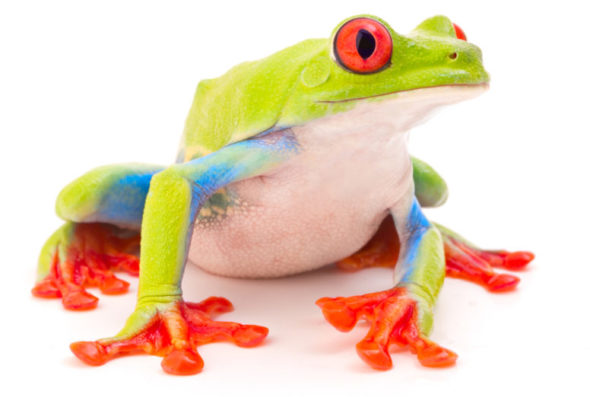
The Human Eye, Night Vision and…Frogs?
Posted April 19, 2017Most of us can agree: one of the best feelings in the world is getting in bed after a long day. You know the feeling we’re talking about: the warm covers wrapped around your body as you rest your head on a fluffy pillow and close your eyes. Now, what isn’t such a great feeling is waking up in the middle of the night to a hungry stomach, or the urge to “go” (you know…). The room is pitch dark and you feel a bit confused, but you know you need to wake up. As you stumble to the kitchen or bathroom, it may be difficult to see your surroundings. You may even step on your dog’s bone, or trip over the pair of shoes you forgot to put away.
Simply put, our abilities to see at night and during the day are not created equally. Have you ever stopped to consider why you can’t see past a certain level of darkness? Many animals are equipped with night vision, especially those that are nocturnal. Until now, it was thought that night vision in animals (humans included) strictly meant seeing in black and white. However, scientists recently discovered frogs have the ability to see color at night. Pretty fascinating – huh?
Before we can understand what’s so amazing about frogs seeing in color at night, let’s back up and explore how humans see at night. According to Science Daily “Most vertebrates, including humans, have two types of visual cells located in the retina, namely cones and rods. The cones enable us to see color, but they usually require a lot of light and therefore stop working when it gets dark, in which case the rods take over so that we can at least find our way home, albeit in black and white.”
While humans have rods of one type, which allow for night vision, Toads and frogs have rods with two different sensitivities that have not been identified in any other vertebrate, including humans. This is why scientists believe these species may be able to see color in low-light situations. Other animal species have been identified as having the ability to see color in low-light situations but frogs are able to see it when it is so dark that the “absolute threshold of the visual system” has been reached.
For humans, there are a variety of physiological, neurological and biochemical mechanisms that occur when trying to see an object in the dark. We just talked about cones and rods — the two types of cells located in the retina. However, to dig deeper into the complexities of the eye, the rod cells are absent from the central portion of the eye (the fovea). Remember, the rods which promote night vision are found in the peripheral of the eye, not the center. This means that optimal night vision for humans occurs from the peripheral.
Another aspect of vision, related to low-light conditions, is pupil dilation. Have you ever been doing yard work and gone inside? You may have noticed that it takes your eyes some time to adjust from the bright light outside to the more dim indoor lighting. In this situation, your pupils are dilating (getting bigger) to let more light in. However, if you go back outside, your pupils will constrict in response to increased sunlight allowing just the right amount of light in to see properly.
In vertebrates, eyes come in all different shapes, colors, and sizes. Pause and think about how fascinating it is that, without even realizing it, your eyes are adjusting to your surroundings, giving you one of the most beautiful things of all – the gift of sight. So while we may not have the same super-sight abilities as frogs, and we trip over those shoes left in the floor when it’s dark, our eyes guide us through the amazing adventure of life, and that alone is quite amazing.
